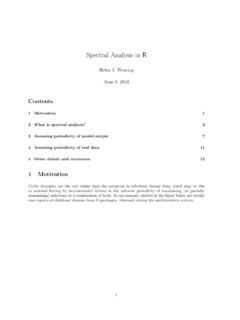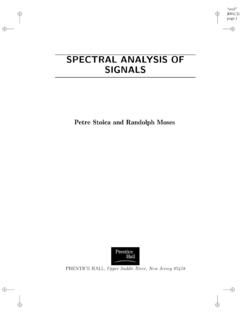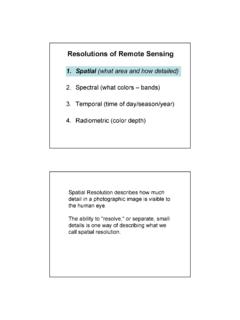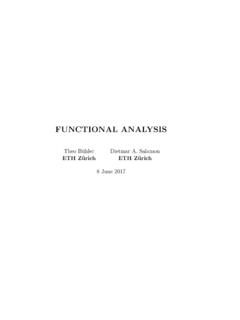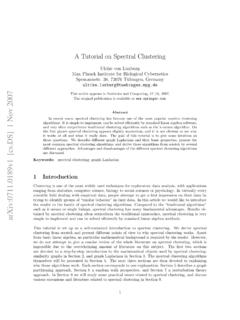Transcription of Unsupervised Deep Embedding for Clustering Analysis
1 Unsupervised deep Embedding for Clustering AnalysisJunyuan of WashingtonRoss AI Research (FAIR)Ali of WashingtonAbstractClustering is central to many data-driven appli-cation domains and has been studied extensivelyin terms of distance functions and grouping al-gorithms. Relatively little work has focused onlearning representations for Clustering . In thispaper, we propose deep Embedded Clustering (DEC), a method that simultaneously learns fea-ture representations and cluster assignments us-ing deep neural networks. DEC learns a map-ping from the data space to a lower-dimensionalfeature space in which it iteratively optimizes aclustering objective. Our experimental evalua-tions on image and text corpora show significantimprovement over state-of-the-art IntroductionClustering, an essential data Analysis and visualizationtool, has been studied extensively in Unsupervised machinelearning from different perspectives: What defines a clus-ter?
2 What is the right distance metric? How to efficientlygroup instances into clusters? How to validate clusters?And so on. Numerous different distance functions and em-bedding methods have been explored in the literature. Rel-atively little work has focused on the Unsupervised learningof the feature space in which to perform notion ofdistanceordissimilarityis central to data clus-tering algorithms. Distance, in turn, relies on represent-ing the data in a feature cluster-ing algorithm (MacQueen et al., 1967), for example, usesthe Euclidean distance between points in a given featurespace, which for images might be raw pixels or gradient-Proceedings of the33rdInternational Conference on MachineLearning, New York, NY, USA, 2016. JMLR: W&CP volume48. Copyright 2016 by the author(s).orientation histograms. The choice of feature space is cus-tomarily left as an application-specific detail for the end-user to determine.
3 Yet it is clear that the choice of featurespace is crucial; for all but the simplest image datasets, Clustering with Euclidean distance on raw pixels is com-pletely ineffective. In this paper, we revisit cluster analysisand ask:Can we use a data driven approach to solve forthe feature space and cluster memberships jointly?We take inspiration from recent work on deep learning forcomputer vision (Krizhevsky et al., 2012; Girshick et al.,2014; Zeiler & Fergus, 2014; Long et al., 2014), whereclear gains on benchmark tasks have resulted from learn-ing better features. These improvements, however, wereobtained withsupervisedlearning, whereas our goal isun-superviseddata Clustering . To this end, we define a pa-rameterized non-linear mapping from the data spaceXtoa lower-dimensional feature spaceZ, where we optimizea Clustering objective. Unlike previous work, which oper-ates on the data space or a shallow linear embedded space,we use stochastic gradient descent (SGD) via backpropaga-tion on a Clustering objective to learn the mapping, whichis parameterized by a deep neural network.
4 We refer tothis Clustering algorithm asDeep Embedded Clustering , DEC is challenging. We want to simultane-ously solve for cluster assignment and the underlying fea-ture representation. However, unlike in supervised learn-ing, we cannot train our deep network with labeled we propose to iteratively refine clusters with anauxiliary target distribution derived from the current softcluster assignment. This process gradually improves theclustering as well as the feature experiments show significant improvements over state-of-the-art Clustering methods in terms of both accuracy andrunning time on image and textual datasets. We evaluateDEC on MNIST (LeCun et al., 1998), STL (Coates et al., Unsupervised deep Embedding for Clustering Analysis2011), and REUTERS (Lewis et al., 2004), comparing itwith standard and state-of-the-art Clustering methods (Nieet al., 2011; Yang et al.)
5 , 2010). In addition, our experimentsshow that DEC is significantly less sensitive to the choiceof hyperparameters compared to state-of-the-art robustness is an important property of our clusteringalgorithm since, when applied to real data, supervision isnot available for hyperparameter contributions are: (a) joint optimization of deep em-bedding and Clustering ; (b) a novel iterative refinementvia soft assignment; and (c) state-of-the-art Clustering re-sults in terms of Clustering accuracy and speed. Our Caffe-based (Jia et al., 2014) implementation of DEC is Related workClustering has been extensively studied in machine learn-ing in terms of feature selection (Boutsidis et al., 2009; Liu& Yu, 2005; Alelyani et al., 2013), distance functions (Xinget al., 2002; Xiang et al., 2008), grouping methods (Mac-Queen et al., 1967; Von Luxburg, 2007; Li et al., 2004),and cluster validation (Halkidi et al.
6 , 2001). Space doesnot allow for a comprehensive literature study and we referreaders to (Aggarwal & Reddy, 2013) for a branch of popular methods for Clustering isk-means (MacQueen et al., 1967) and Gaussian MixtureModels (GMM) (Bishop, 2006). These methods are fastand applicable to a wide range of problems. However, theirdistance metrics are limited to the original data space andthey tend to be ineffective when input dimensionality ishigh (Steinbach et al., 2004).Several variants ofk-means have been proposed to addressissues with higher-dimensional input spaces. De la Torre &Kanade (2006); Ye et al. (2008) perform joint dimension-ality reduction and Clustering by first Clustering the datawithk-means and then projecting the data into a lower di-mensions where the inter-cluster variance is process is repeated in EM-style iterations until conver-gence.
7 However, this framework is limited to linear embed-ding; our method employs deep neural networks to performnon-linear Embedding that is necessary for more Clustering and its variants have gained popular-ity recently (Von Luxburg, 2007). They allow more flex-ible distance metrics and generally perform better thank-means. Combining spectral Clustering and Embedding hasbeen explored in Yang et al. (2010); Nie et al. (2011). Tianet al. (2014) proposes an algorithm based on spectral clus-tering, but replaces eigenvalue decomposition with deepautoencoder, which improves performance but further in-creases memory spectral Clustering algorithms need to compute thefull graph Laplacian matrix and therefore have quadraticor super quadratic complexities in the number of datapoints. This means they need specialized machines withlarge memory for any dataset larger than a few tens ofthousands of points.
8 In order to scale spectral clusteringto large datasets, approximate algorithms were invented totrade off performance for speed (Yan et al., 2009). Ourmethod, however, is linear in the number of data points andscales gracefully to large the Kullback-Leibler (KL) divergence be-tween a data distribution and an embedded distribution hasbeen used for data visualization and dimensionality reduc-tion (van der Maaten & Hinton, 2008). T-SNE, for instance,is a non-parametric algorithm in this school and a paramet-ric variant of t-SNE (van der Maaten, 2009) uses deep neu-ral network to parametrize the Embedding . The complexityof t-SNE isO(n2), wherenis the number of data points,but it can be approximated inO(nlogn)(van Der Maaten,2014).We take inspiration from parametric t-SNE. Instead of min-imizing KL divergence to produce an Embedding that isfaithful to distances in the original data space, we definea centroid-based probability distribution and minimize itsKL divergence to an auxiliary target distribution to simul-taneously improve Clustering assignment and feature repre-sentation.
9 A centroid-based method also has the benefit ofreducing complexity toO(nk), wherekis the number deep embedded clusteringConsider the problem of Clustering a set ofnpoints{xi X}ni=1intokclusters, each represented by a centroid j,j= 1,..,k. Instead of Clustering directly in thedataspaceX, we propose to first transform the data with a non-linear mappingf :X Z, where are learnable pa-rameters andZis the latentfeature space. The dimen-sionality ofZis typically much smaller thanXin orderto avoid the curse of dimensionality (Bellman, 1961). Toparametrizef , deep neural networks (DNNs) are a natu-ral choice due to their theoretical function approximationproperties (Hornik, 1991) and their demonstrated featurelearning capabilities (Bengio et al., 2013).The proposed algorithm (DEC) clusters data bysimultane-ouslylearning a set ofkcluster centers{ j Z}kj=1in thefeature spaceZand the parameters of the DNN that mapsdata points intoZ.
10 DEC has two phases: (1) parameter ini-tialization with a deep autoencoder (Vincent et al., 2010)and (2) parameter optimization ( , Clustering ), where weiterate between computing an auxiliary target distributionand minimizing the Kullback Leibler (KL) divergence toUnsupervised deep Embedding for Clustering Analysisit. We start by describing phase (2) parameter optimiza-tion/ Clustering , given an initial estimate of and{ j}kj= Clustering with KL divergenceGiven an initial estimate of the non-linear mappingf andthe initial cluster centroids{ j}kj=1, we propose to im-prove the Clustering using an Unsupervised algorithm thatalternates between two steps. In the first step, we com-pute a soft assignment between the embedded points andthe cluster centroids. In the second step, we update thedeep mappingf and refine the cluster centroids by learn-ing from current high confidence assignments using an aux-iliary target distribution.

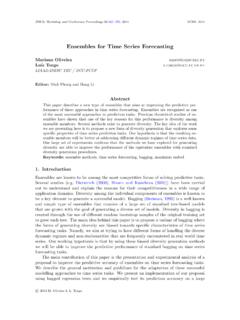
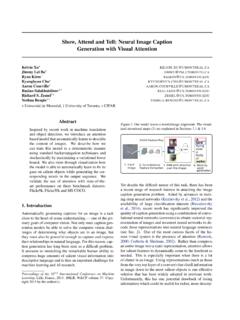
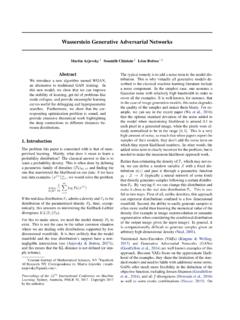
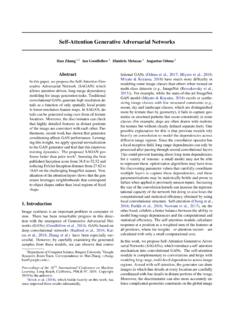
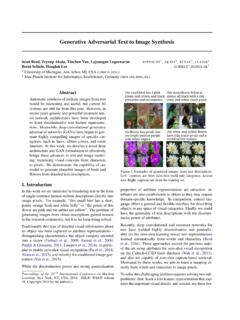


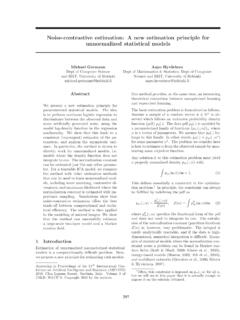
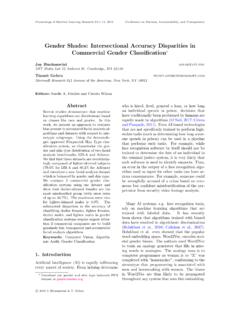
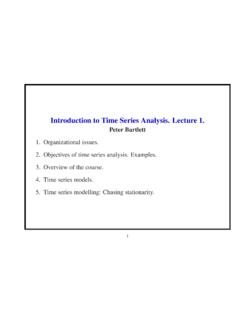
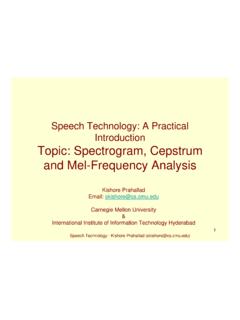
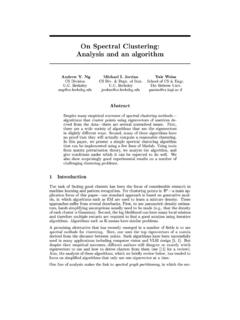
![[TS] Time Series - Stata](/cache/preview/f/9/9/c/5/9/9/f/thumb-f99c599f9adc31cbb3de3d6ed398bf7c.jpg)
